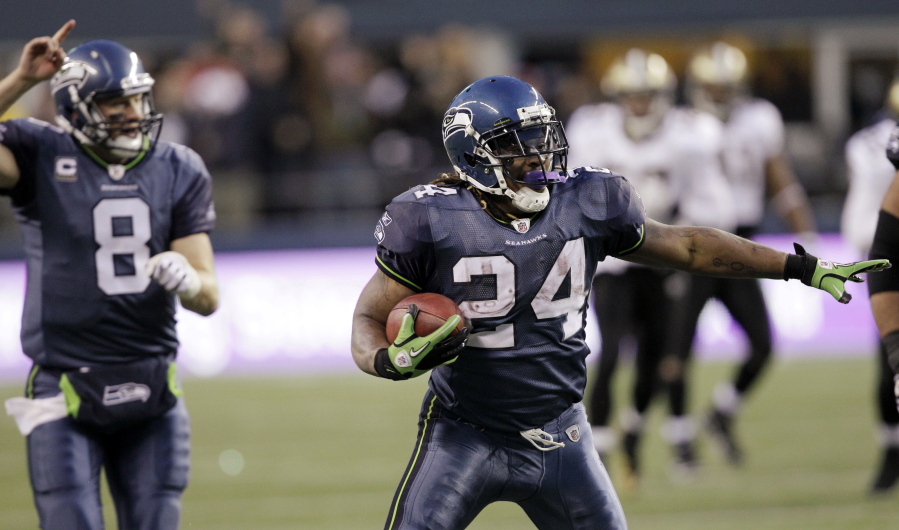SEATTLE — “The crowd is silent now, as opposed to when the Saints have the ball,” NBC broadcaster Tom Hammond said, before more than 66,000 fans refuted that fact.
It was Jan. 8, 2011, and the 7-9 Seahawks led the 11-5 Saints, 34-30, with 3:40 left in the NFC wild-card game. At a supposedly silent Qwest Field in Seattle, Matt Hasselbeck took a snap at his own 33-yard line, turned and handed the ball to Marshawn Lynch.
Amid a morass of broken tackles, the “Beast Quake” was born.
Lynch — a 215-pound, 24-year-old torpedo — laid waste to New Orleans’ defensive line, burrowing through Scott Shanle and Will Smith’s feeble tackle attempts. At the second level, Darren Sharper and Remi Ayodele each latched onto a leg — and Lynch shook them off like Forrest Gump finally breaking free of his metal braces. Jabari Greer wrapped his arms around Lynch’s waist at the 49-yard line, and received a four-yard ride before unceremoniously tumbling to the turf.
Which is when Tracy Porter ate the most iconic stiff-arm in NFL history. As the Qwest Field crowd came irreparably unglued, the 185-pound corner attempted to wrangle a loose lion by tugging on its fur. Instead, Lynch launched Porter seven yards into the stratosphere, then skirted through defensive lineman Alex Brown’s diving arms along the sideline. He veered inside, evaded a helpless Roman Harper, and somersaulted backward — exalted — into the end zone.



